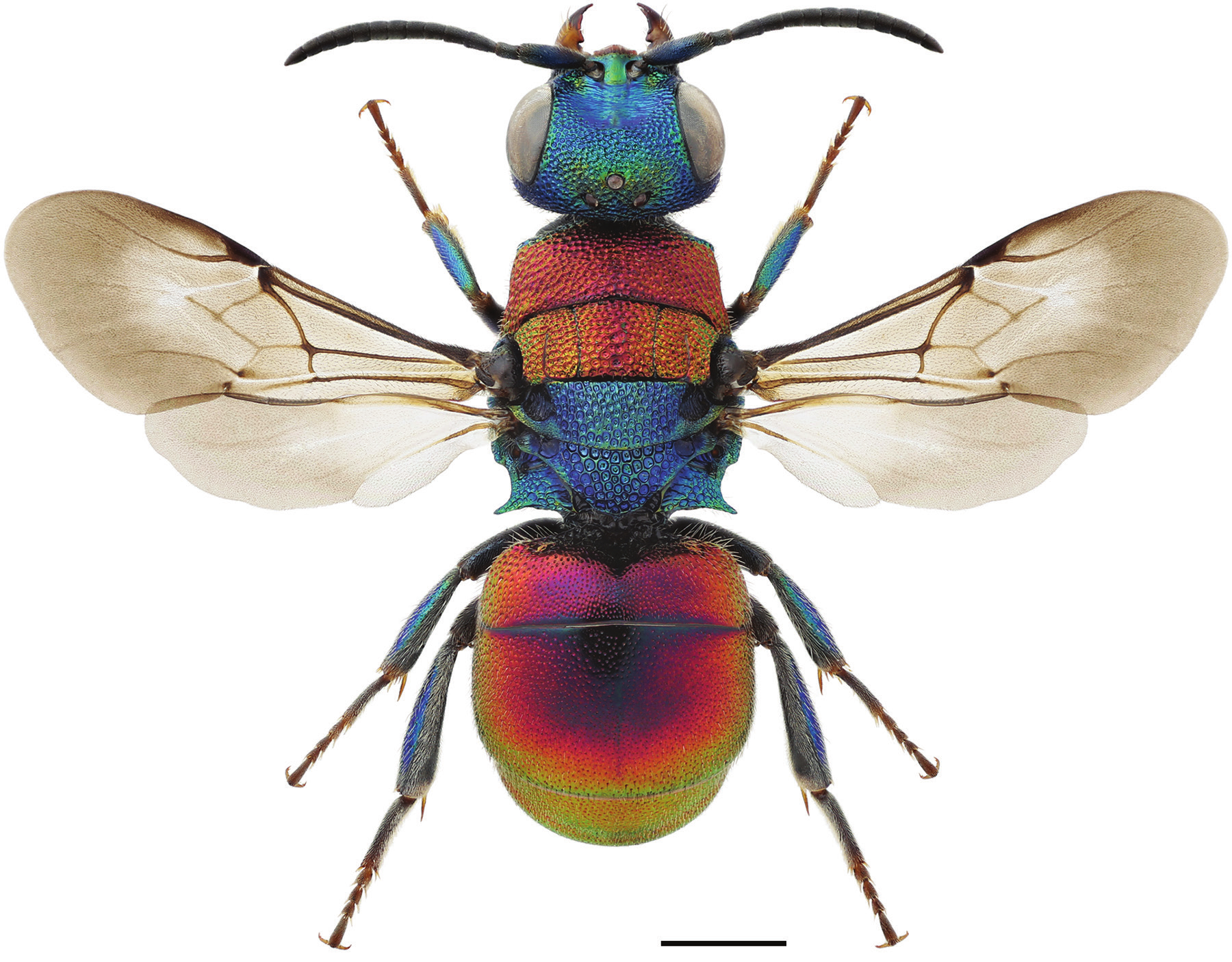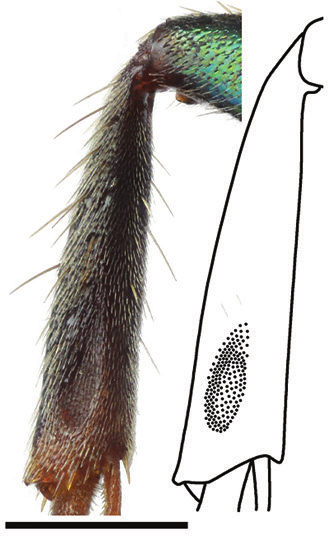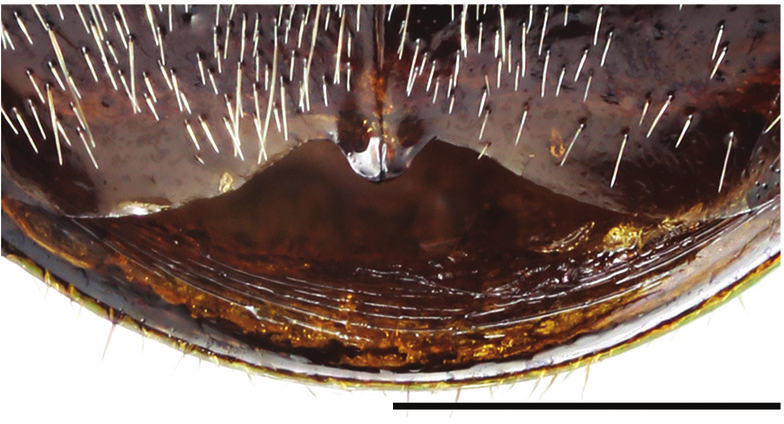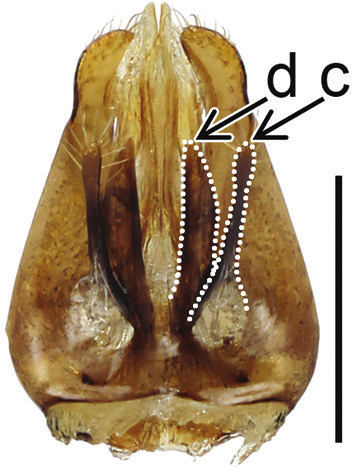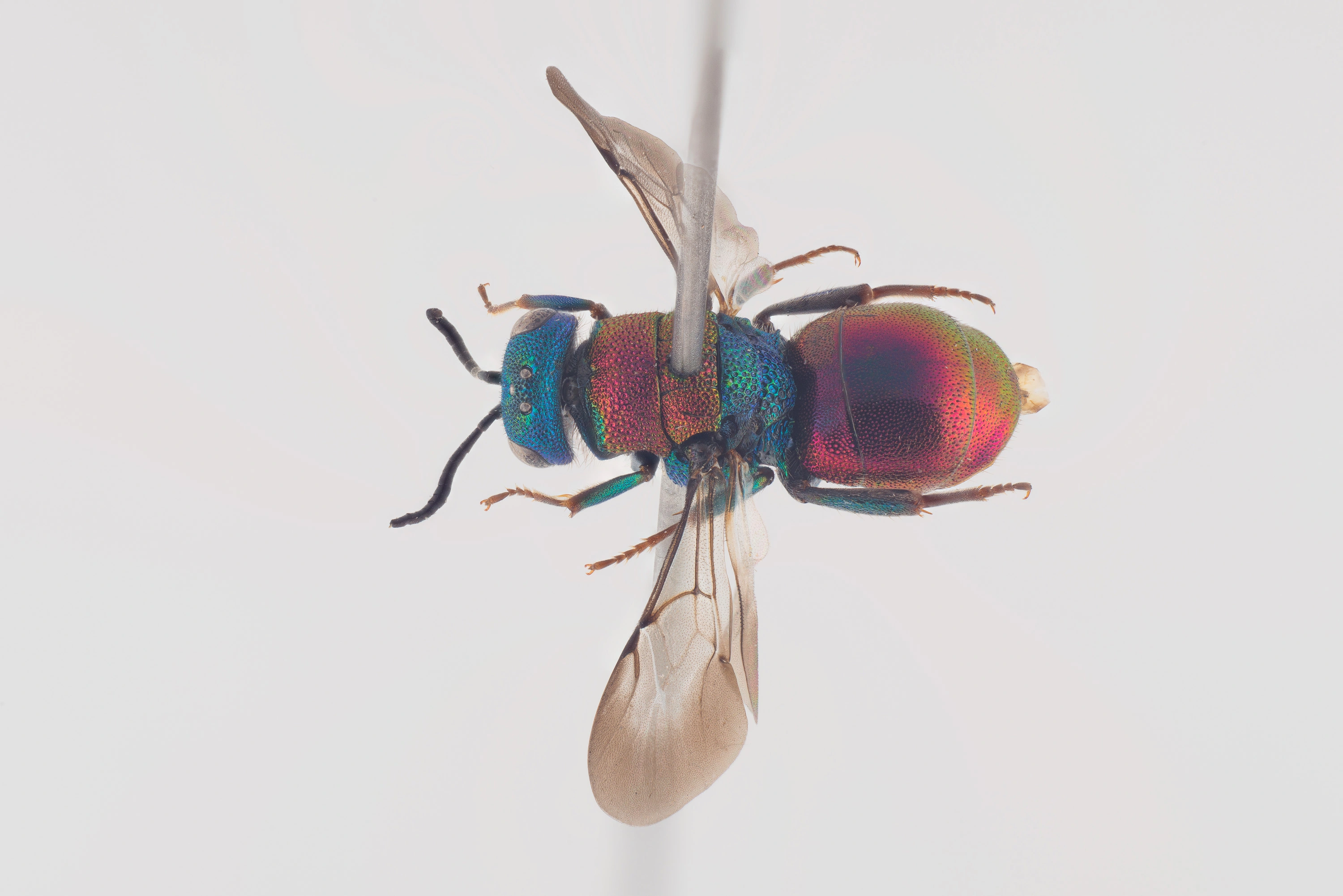Hedychrum niemelai
Figure 53
Hedychrum niemelai ♀. Scale 1 mm.
The species is found in sandy areas, often together with Hedychrum nobile. The host is Cerceris quadrifasciata and probably also other Cerceris-species.The species is frequently visiting flowers. H. niemelai can be distinguished from the closely related H. nobile by the smaller size and unique sexual characters of sternites and middle tibiae.
- Innhold
- Diagnosis
- Distribution
- Biology
Diagnosis
Figure 58
Left mesotibia: H. niemelai ♂. Scale 0.5 mm.
Figure 60
S2, ventral view: H. niemelai ♀. Scale 0.5 mm.
Figure 63
T3, dorsal view: H. niemelai ♂. Scale 0.5 mm.
Figure 65
Genital capsule, ventral view: H. niemelai ♂, d digitus, c cuspis. Scale 0.5 mm.
Length 5–8 mm.
The colouration is similar to H. nobile, but the pronotum and mesoscutum of the female are usually bright red (Fig. 53) and rarely yellowish. The mesotibial depression of the male is deeper than in H. nobile and oval or longitudinal in shape (Fig. 58). The tubercle on the posterior margin of S3 of the female is apically divided and smaller (Fig. 60) than in H. nobile. Additionally, the punctation of T3 is denser, especially in the male (Fig. 63).
Distribution
Denmark, Estonia, Finland, Latvia, Lithuania, Norway, Sweden. Common.
Trans-Palearctic: from Europe to China (Heilongjiang) (Rosa et al. 2014).
Be aware that the records present in the GBIF map may be misleading for some countries due to unrevised data sets or missing information.
GBIF Taxon: Hedychrum niemelaei Linsenmeier, 1959Biology
Habitat: sparsely vegetated sandy areas. Adults are often found on flowers of Apiaceae, Asteraceae and Onagraceae (Rosa 2004, our own obs.).
Flight period: from early June to late August.
Host: Cerceris quadrifasciata (Panzer) and C. quinquefasciata (Rossi) (Crabronidae) (Schmid-Egger et al. 1995, Saure 1998, our own obs.). Possibly also C. arenaria (Linnaeus), C. ruficornis (Fabricius) and C. rybyensis (Linnaeus) (Lomholdt 1975, Morgan 1984).
